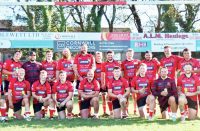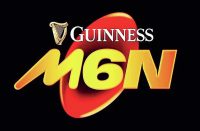Brendan Gallagher delves into some of rugby’s most enduring images, their story and why they are still so impactful

Iconic Rugby Pictures: PART 33
Dr Craven raises some smiles on testing UK tour December 10, 1969
What’s happening here?
It’s December 10, 1969 and South African Rugby supremo Dr Danie Craven has been enjoying a rare bit of light-hearted banter with the Boks down in the depths of the changing rooms at the Talbot Athletic Ground, Aberavon. The Boks have just beaten an Aberavon/Neath combo 27-0 and for once the mood is upbeat. Skipper Dawie de Villiers sips a cup of tea – or perhaps there was something stronger in the cup – and outwardly all is well with the world.
What is the story behind the picture?
Despite the smiles these were very testing times for the Boks, on and off the field, as their government persisted with its loathsome apartheid policies and South Africa’s sporting teams refused to countenance ever considering a black player. In 1968 the Lions, despite much opposition, had toured South Africa but that winter the MCC eventually declined to travel after the D’Oliveira affair in which the South African government refused to sanction an MCC squad including a Cape Coloured native – Basil D’Oliveira –who had moved to Worcester to make his life here.
There were demands that the 1969-70 Boks tour be scrapped but Craven and the South Africans stood firm. On arrival they were met with protestors and pitch invasions everywhere, the tyres of their coaches were let down, their hotel rooms were broken into and ransacked. The entire squad – who had known nothing other than apartheid – was out of its comfort zone and a little perplexed. Were Peter Hain and his fellow protestors right? Should they even be here. Instinctively they looked to Craven, the senior statesman of South African rugby.
What happened next?
They ploughed on regardless. Ten days later they lost to England at Twickenham for the first time but, in playing terms, things picked up and they remained unbeaten during the final 11 games on tour including a 21-12 win over the Barbarians in London. They departed much the wiser and rather thoughtful.
Why is the picture iconic?
Craven was the most elusive of rugby characters and this is the only picture I have seen that seems to hint at the individual behind the myth. He is completely at home in a grubby, smelly changing room – you can sniff the embrocation and sweat, hear the raucous shouts from the showers. This is his lair, these are his boys, indeed he taught many of them at Stellenbosch University. He will not desert them.
Physically he is not imposing but this is a man who once started a Test match against Australia at No.8. He also played Test rugby at scrum-half, fly-half and centre. He starred in a series win in New Zealand in 1937 and captained the Boks to a 2-1 series win over the Lions in 1938. In 1949 he coached the Boks to a famous series win over the All Blacks and since 1958 he had been chairman of the South African Rugby Board. He served in that role for over 30 years and ruled with a rod of iron. His grandfather was from Steeton in Yorkshire and he could be as stubborn as hell and didn’t suffer fools gladly.
“On Craven’s watch Earl Tobias finally became the first black player to represent the Springboks”
Outwardly, at first glance, Craven is an unremarkable man in his late 50s with an impish quality dressed in a rain coat and cashmere scarf. Yet there is no question who the star turn in the room is. The photographer David Cairns is there solely to capture the essence of Craven and South Africa’s best rugby players are rather chuffed to be included in proceedings. One is even straightening his tie.
A man of contradictions, Craven was an Afrikaans speaker born in Bloemfontein who nonetheless preferred the Western Cape to the High Veldt and the company of Englishspeaking South Africans. He was the High Priest of South African rugby but liked to be known as an academic and addressed as Dr Craven. He held doctorates in Ethnology, Psychology and Physical Education.
For many years he insisted that no black player would ever represent South Africa yet in late middle age – perhaps as a result of the protests on this tour? – there was something of a Damascus moment and his stance softened. The 1974 Lions were invited to play against a black team – the Leopards – and one mixed race team, the Proteas – during their tour and it was on Craven’s watch that Earl Tobias finally became the first black player to represent the Springboks.
The cynic might suggest the key moment was when notion of a World Cup was mooted within the IRB and he quickly appreciated that his beloved South Africa would never be allowed to compete unless their teams were technically multi-racial. That cynic might be right but, if nothing else, Craven was aware of the sea change that would be necessary.
In 1986 he met with the ANC to try and merge the South African with the black South African Federation with the aim of fielding multi-racial South African teams. It wasn’t immediately successful but it was a start.
Footnote: Since 1964 South Africa’s top schoolboy players, representing their unions, have met every year in a week long tournament – Craven week – named after the man himself.























